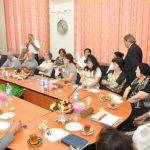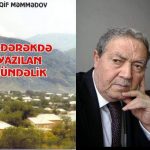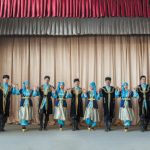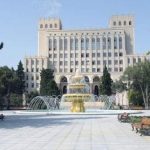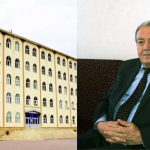Enigmatic America in the Atlantic Ocean
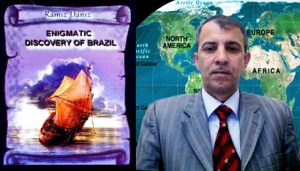
Columbus presented his transatlantic project to the king Juan II at the beginning of 1484 when lived in Portugal. But that time wasn’t convenient for the monarch of Portugal. Then the king was busy with suppressing revolt raised in the country by magnates. Besides it, he was interested in expeditions towards western coasts of Africa.
It is known that, Columbus had asked the king to give him many privileges for his services after the expedition completed successfully. To ask such privileges was insolence. Nobody, even well-known noblemen hadn’t asked such privileges before Columbus. What were demands of the Genoese seaman? He had demanded to be admiral of the Atlantic Ocean, title of nobleman, to be vise-king of lands,
which had to be discovered, one tenth of incomes of those lands, eight percent of money, which would be earned at the result of the trade, which would be carried out in new lands and gold spurs. Juan II, who kept his noblemen under the strict surveillance, couldn’t give mentioned privileges to anybody.
If Juan II was very strict and harsh monarch, why he didn’t reject Columbus directly? First of all, seaman’s project had to be analyzed by scientists. The project was presented to“Mathematical Union” of Lisbon where the most talented and skilful scientists and mathematicians of Portugal worked under the leadership of the archbishop of СeutaDiego Ortizde Villegas. Some of members of that organization were Jewish scientists. Rodrigo, who had improved astrolabe and sextant, and expert of the navigation astronomy Hose Vitsingowere among those scientists. Mentioned persons thought that, measures and distances hadn’t been fixed correctly in the project. Though those scientists also didn’t know exact sizes of the Earth, they were sure that, calculations of Columbus were wrong.
It is not known which decision was made by that council, but it is known that, decision made in 1485 wasn’t in favour of Columbus. The Genoese seaman’s wife died in the same year and he decided to go to Spain.
As soon as the Genoese seaman left Lisbon, the king Juan II decided to send an expedition to the west of the Atlantic Ocean in order to check his project. The king and his advisers made this decision by common consent.
At that time the“Island of Seven Cities”, Haldat and Anthelia Islands located in the west of the Atlantic Ocean were discussed in the Pyrenean peninsula and most countries of Europe.Portuguese sea travelers had organized several expeditions for the discovery of those islands.
Scientists of the middle ages and ancient times were interested in Haldat islands or Islands of Good Luck very much. Some scientists, especially remarkable Azerbaijani scientist, founder of Maraga observatory Muhammad Nasiraddin Tusi (1201-1274) noted that, those islands were situated at 350 km towards the west from Greenwich meridian.
English scientist G. R. Kaye, who was interested in this problem very much, noted in his work “Astronomy of India” that, Islands of Good Luck were situated at 350 towards the west from Greenwich meridian.
Why did G. R. Kaye think so? Most of scientists of the middle ages and ancient times thought that, Islands of Good Luck were in the west of the Atlantic Ocean.
Remarkable scientist of the Mamun Academy established in Khorezm Abu Raihan Al-Biruni (973-1048) wrote about it as following: “Some scientists calculate the initial length from Islands of Good Luck, but some of them start calculation from the coast of the West Sea. Difference between these two places is 100”.
Arabian geographer of Spain Ali ibn al Magribi al Andaluzi, Syrian scientist, employee of Maraga obser-vatory Gregory Abul Faraj, remarkable scientist of that observatory Gutbaddin Shirazi, well-known geographer and historian of XIII century Mahmud el-Caswini and well-known Arabian scientist of XIV century Harrary had different scientific ideas about those islands.
Harrary’s explanation is more interesting: “Western lands start from the West Sea. Nobody had seen another side of this sea and nobody knows what there are. Most of islands have been settled. Two of them are called Algeria Haldat. They are the largest islands”.
This thought of the Arabian scientist surprised the Professor Habibulla Mammadbayli, who had investigated scientific heritage of Nasiraddin Tusi, and he wrote following thoughts: “Harrary’s notes are very interesting, he had written about western lands and Anthelia Islands. The Atlantic Ocean was called West Sea in the middle ages. Islands mentioned by Harrary might be Canary Islands, Azores, Green Cape Islands or Anthelia Islands. As Canary Islands, Azores and Green Cape Islands don’t consist of many islands and there aren’t great differences between them, they couldn’t be considered by Hararry. It seems that, Harrary mentioned Anthelia Islands in his writing.
Two of Anthelia islands – Cuba and Haiti are larger than others…
Then these two islands are Algeria Haldat, which was mentioned by Harrary…”
If Harrary had written about Anthelia Islands at the beginning of XIV century, there had to be some information about those islands in geographical literature, especially on maps published after it.
Ancient scientists noted that Anthelia Islands were situated in the east of Asia. Really, maps describing mentioned islands had spread widely in Europe.
Italian cartographer Francesco Pizziano had made a map describing Anthelia Islands in 1367. That map is kept in the library of Parma at present. Besides it, another map made by the unknown cartographer in 1424 is kept in Weimar, Germany. That map had been made by the German scientist Humboldt. The French cartographer Battista Beccaria had made a map in 1435. Besides the name of Anthelia, its synonym Stanahia also had been written on that map. In 1436, the Italian cartographer Andrea Bianchini had made the Big Venetian map, which described Anthelia Islands. The Italian scientist Paolo Toscanelli described Anthelia on the centre of the Atlantic Ocean on his map made in 1474.
Most of mentioned maps were discussed by European scientists. Scientists knew that, coasts of the Atlantic Ocean located in the west of the Old World weren’t endless and there wasn’t any doubt that, there was large land area in the west. But distance between that territory and European coasts was unknown.
All these facts had to be checked. The king Juan II entrusted the Frenchman by name Ferdinand van Olmen known in Portugal as Fernando de Ulmo with realization of this work, he didn’t choose Columbus for this purpose.
Ferdinand van Olmen’s fellow-countrymen had worked as governor in one of Azores. He also was governor of one island before the travel. At that time, most seamen, financers and merchants serving Portugal used to organize expeditions with their own capitals, for example, Corte-real brothers had organized such expeditions in 1500, 1502 and 1506. S. Morison, Ch. Verlaine, Vadim Magidovich and Iosif Magidovich noted in their works: “Van Olmen united with a colonialist by name Estreito from Madeira when he organized his expedition. According to words of van Olmen, he wanted to discover several islands located in the west of the Atlantic Ocean or coast of the continent. He called the country he had to discover the “Island of Seven Cities” as didn’t know its name”.
Of course, this thought is confusing. Van Olmen had gone to expedition in accordance with the king’s order and he had to check Columbus’s project practically.
Ruling committees of Portugal didn’t pay enough attention to unknown western part of the Atlantic Ocean before Paolo Toscanelli’s well-known map was made. Everybody wandered if there were unknown islands in the west of Canaries, Madeira Islands, Azores and Green Cape Islands. Portuguese organized travels towards the west of mentioned islands in the middle of XV century. In 1462, the king Alfonso V gave great privileges to the person by name Vogado for appropriating about two islands located in the west. The seaman by name Telles searched for Anthelia and the “Island of Seven Cities”. Many seamen travelled after him, but nobody achieved any success.
At that time following rumour had spread in Portugal: Islands, which can’t be discovered, are seen from a distance. Of course, it is impossible to believe in such unserious thought. If islands were seen in the ocean, then the king Alfonso V could send there at least one expedition in order to explore those islands. There wasn’t any doubt that, there were islands in the western part of the Atlantic Ocean (near mentioned islands). Columbus also agreed with this thought. But he believed that, there were mythic Anthelia and other islands on the middle of the ocean. The Genoese seaman thought like that because of the letter of Toscanelli. It was possible to use those islands as stopping-places in the ocean passage on the way to Asia.
Van Olmen knew results of travels of Vogado and Telles and knew that, it was impossible to use any island as the stopping-place on his way to India through the west, so his expedition would meet with great difficulties. That’s why though Juan II gave permission for organization of the expedition he had doubts about its success. Otherwise he could organize the expedition with his own capital.
The king would give many privileges to van Olmen in 1486 if the expedition completed successfully as he had organized the travel on his own account.
“Mathematical Union” told the king that, Columbus had prepared his project owing to Paolo Toscanelli’s calculations. That’s why Olmen had to explore the Atlantic Ocean in accordance with those calculations. May be, the project of the Genoese seaman had been copied when it was in “Mathematical Union” and that copy had been given to van Olmen.
Van Olmen started his travel with two caravels in spring of 1487. He planned to pass the Atlantic Ocean in 40 days. I want to mention that, in 1492, Columbus had overcome the distance between Canaries and Bahamas in 36 days. When the Professor Charles Verlinden read the declaration of the French seaman, he noted with surprise that, Portuguese seamen had sent secret expeditions to the west of the Atlantic Ocean before 1486, they knew which islands were on the other side of the ocean and where the unknown continent was situated.
I don’t agree with this thought of Ch. Verlinden. If van Olmen knew the place where unknown islands and large land area were situated, he could easily discover those territories. Besides it, if Portuguese seamen knew the east coast line of the New World, Portuguese could choose the meridian, through which the demarcation line had to pass, when the Pope divided the Earth between two kingdoms in accordance his bull in 1493. But it didn’t happen. As it is known, Portuguese achieved their goals only when Tordesillas was concluded in 1494. If above mentioned assumptions were true, representatives of Juan II might demand to move the demarcation line for 470 liq towards Anthill Mountains discovered by Columbus, but not for 370 liq towards the west from Green Cape Islands. Thus, Portuguese didn’t know that, there was any other island or large land area in the Atlantic Ocean in the west of Canaries, Madeira Islands, Azores and Green Cape Islands.
Then how could van Olmen pass the ocean in 40 days? It is obvious that, he reason is different from above mentioned factors.
In Portugal Columbus said that, he will pass the Atlantic Ocean in about 30 days in order to reach the eastern coast of Asia. Van Olmen shared this thought with Juan II after he looked through the Genoese seaman’s project. It means that, the French seaman’s expedition travelled in accordance with the transatlantic project prepared by Columbus besides the map made by Paolo Toscanelli.
Christopher Columbus, who was an experienced and skilful seaman of his time, didn’t expect such events. That’s why he had presented the project consisting of incorrect digits. He had another map, which he didn’t show anybody, even to his native relatives (would be called “Lost map of Columbus” in future). That’s why van Olmen couldn’t achieve any success during his travel.
The French sea traveler, who had seriously prepared for the mentioned travel, planned to return to coasts of Portugal after six months. But he couldn’t achieve any success. The reason of the failure of van Olmen and Estreito may be as following: they started their travel in inconvenient period of the year and didn’t use Passats properly. Bartolome de las Casas – one of annalists, who had described in his writings occupation of New World coasts by conquistadors, – wrote about the travel of Ernan de Olmos (Probably he considered Ferdinand van Olmen) in one of his stories. He wrote: “That travel took him to the western coasts of Ireland, to the north of the route determined by Columbus”.
Unfortunately, van Olmen couldn’t return from that travel. Ch. Verlinden wrote: “In spite of all these, the French seaman, who worked for Portugal, might discover America before the Genoese seaman, who worked for Castilia. Then, history of the west would be different. If Olmen could achieve his goal, language of Brazil and other 17 countries of Latin America might be Portuguese.
Sometimes fortune of the history depends on the fortune of one person!” If Juan II accepted Columbus’s offer, language of former colonies located in the western part of the Atlantic Ocean might be Portuguese.
After analyzing both expeditions, I can decisively note that, Columbus had prepared for the travel more seriously than the French seaman and could achieve his goal owing to his efforts. Members of the “Mathematical Union” couldn’t forgive themselves for their mistake after Columbus’s expedition achieved success.
Christopher Columbus, who had prepared very well and was an experienced seaman, left the port of Palos on August 3, 1492 with 90 persons and three vessels – “Santa Maria”, “Pinta” and “Ninia” according to the consent of Spanish monarchs Ferdinand and Isabella. He discovered today’s Watling island of Bahamas on October 12 and called it “San Salvador”.
Unlike Spaniards, Portuguese didn’t believe that, Columbus had reached the East Asia. Some scientists couldn’t believe that, outline of the Earth is so short when analyzed the admiral’s route. But there were skeptics in Spain, who worked alone.
I think that, Ch. Columbus couldn’t agree with thoughts of the Florentine cosmographer. First of all, well-known sea traveler couldn’t agree with length of the Earth’s outline. It means that, Asia isn’t situated in the Atlantic Ocean at 10000-12000 km away from Canaries in the west as Paolo Toscanelli thought. Columbus had determined that, land area located in the west of the Atlantic Ocean is at 4500-5000 km away from Europe. It means that, the mentioned land was other land, which was unknown for the Old World. This idea of the sea traveler wasn’t fortuitous. I explained it in my work “The scientist passed ahead of centuries – Nasiraddin Tusi” in detail.
An Italian humanist Pietro Martire (Poignant Peter), who lived in Barcelona and were close to the kingdom palace, corresponded with his fellow-countrymen. He had written in the letter written on November 1, 1493: “One person by name Colon (Columbus) says that, he could reach India, the place of antipodes of the west. He discovered many islands located on the other side of the East Ocean near India as cosmographers thought… I don’t want to write anything about it, nevertheless size of the Earth made me to think otherwise”.
That is, before the travel, Christopher Columbus thought otherwise about calculations of Paolo Toscanelli as Pietro Martire. Doubtless, Columbus, who had read a lot of scientific literatures, might think as Pietro Martire.
President grant holder on literature, laureate of the “Golden pen” award Ramiz Daniz
A piece from book “Enigmatic discovery of Brazil”


